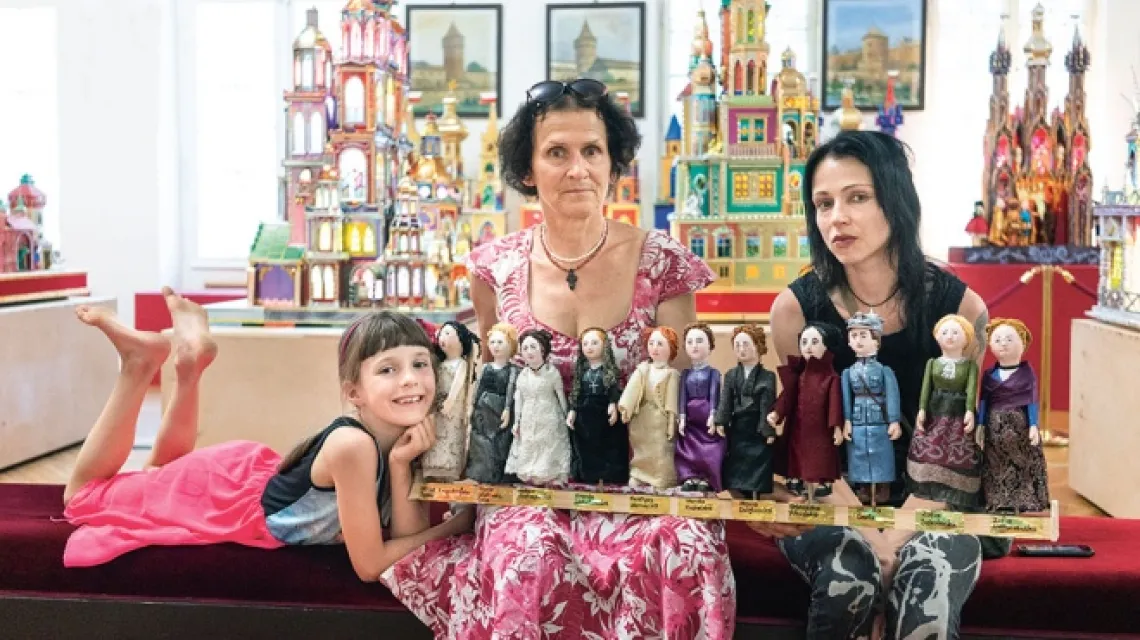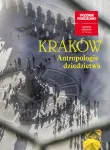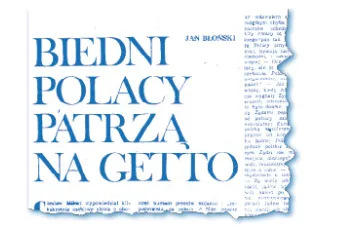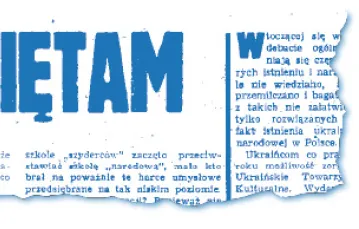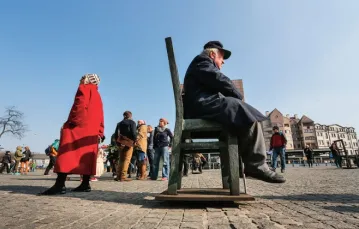Wykupienie dostępu pozwoli Ci czytać artykuły wysokiej jakości i wspierać niezależne dziennikarstwo w wymagających dla wydawców czasach. Rośnij z nami! Pełna oferta →
On the face of it, things are simple enough: a nativity scene is a nativity scene. However, miniature cardboard models of Kraków elicit extreme reactions; supporters of the craft consider them masterpieces of folklore, while its detractors dismiss them as manifestations of folk kitsch. When, in November 2018, the making of nativity scenes was entered onto UNESCO’s list of intangible cultural heritage, the city felt proud.
Yet it was not the scenes themselves that were recognised, but rather the art of making them and, indirectly, the artists who make them. “A nativity scene is not just a building. What is important is the history and the people”, explains Małgorzata Oleszkiewicz from the Ethnographic Museum in Kraków.
Tragedy Breeds Success
It’s June, and in an old tenement house in Kraków’s Zwierzyniec district, Stanisław Malik is applying the finishing touches to his design of this year’s nativity scene. There is still half a year to go before the competition in the Market Square begins, but he claims that it is always better to start early and do everything slowly, without rushing. This is the Kraków way.
On the kitchen wall are pictures of nativity scenes made by him and by his son, father, and grandfather. A separate frame is reserved for photographs with popes and presidents. Over four generations, the Malik family has produced so many nativity scenes and met so many famous people that any more photos will probably have to be hung above the cooker.
The family history of nativity scene making started with a tragedy. Stanisław’s grandfather, Walenty Malik, was wounded during the First World War. His serious leg injury prevented him from safely continuing in his profession as a bricklayer, because, as his grandson observes, “in those days, contrary to what you might think, occupational health and safety was a consideration”. But Walenty decided to turn misery into success by retraining. He became a tram driver and nativity scene maker. “My grandfather used to give performances in churches, tram depots, palaces, and manor houses”, says Stanisław. “He did all this to make some extra money for Christmas”.
Ugly Herod
The beginnings of the Kraków nativity scene industry are less obvious than they might seem. Everything started with theatre. Originally, the term “nativity scene” was used to describe puppet shows put on during the Christmas period, which could be compared to today’s nativity plays. “The Polish terms ‘szopka’ (nativity scene) and ‘jasełka’ (nativity play) were used interchangeably”, says Oleszkiewicz.
Interestingly, the word ‘jasełka’ is derived from ‘jasło’, which means a hay-rack feeder. Nativity plays came to Kraków with monks who promoted this form of theatre throughout Europe. At that time, they were a fundamental part of popular culture. The scenery for the play was provided by a straw roof and a wooden stable. This was much closer to the popular image of Christ’s birthplace than an authentic Bethlehem cave from the Middle East.
Interestingly, the number of characters in the play changed according to the calendar, which is why the Three Magi never appeared until 6 January. The motionless figures were animated by monks who, hidden behind the stage, began to perform scenes from mystery plays. Over the years, the scripts of nativity plays were modified, but certain passages became classics, particularly one from Herod’s death scene, which proved an instant hit with the audience: “Ugly Herod, farewell! For your excesses, you’ll go to hell”.
A nativity play was story brought to life. And it was not just a Christmas story. What does this mean exactly? Nativity plays featured scenes from the lives of the inhabitants of a given parish. During her research on nativity scene puppets, Oleszkiewicz discovered mysterious figures of local heroes or, conversely, local fools. One of her discoveries was Kusy Janek (Little Johnny) whom the people remembered so well (whether he was famous or notorious is another matter) that a nativity play character was named after him. There are lots of “Little Johnnies”; in addition, each nativity play had to feature a witch and a stranger, who was usually a Jew or a Gypsy. Witches invariably wielded a butter churn. “It was believed that any female neighbour could be a witch, since it was common knowledge that they delivered butter to their ‘devil brothers’”, explains Małgorzata Oleszkiewicz.
Attention was also paid to building tension: a frightening character was mandatory in every nativity play. The Ethnographic Museum has a rich collection of stranger figures. Some of these are difficult to identify, since not all folk artists who produced nativity scene puppets were equally talented and creative. “There always was a rabbi and a Jewish merchant, but it is difficult to say whether this is a Jew or not”, says Oleszkiewicz. “To the modern viewer, this figure resembles a guinea pig, but it is in fact a Gypsy with a bear”.
Originally, nativity plays were meant to provide Christmas entertainment rather than mystical catharsis. “People liked them very much. They would turn over benches and climb on each other’s backs. And all this was happening inside a church!”, says Oleszkiewicz. However, in the 18th century, the church authorities, led by the bishop of Poznań, banned such performances, as they were said to be too joyful and not dignified enough. In short, they amounted to profanity.
A Dispute over Priority
Forbidden fruit is all the more tempting. After being kicked out of the church, nativity plays flourished, and they gradually came to resemble the nativity scenes we know today. “Owing to the church ban on performances, the Christmas puppet plays needed their own space. Initially performed behind curtains in private homes, they ultimately gained scenery consisting of two towers with a straw roof between them and a stage for the puppets underneath”, explains Oleszkiewicz.
“Did nativity scene makers collaborate or was the launch of the industry someone’s brainwave? We don’t know, but nativity scenes began to be produced in Krowodrza and Zwierzyniec”, says Stanisław Malik. “The nativity scene makers worked in churches, rebuilding them after the war, so they had excellent architectural knowledge. They decided that Jesus was not to live in a barn, but rather in the most beautiful churches in Kraków”.
The first contemporary nativity scene in colourful packaging modelled on the Church of Saint Mary was probably made by Michał Ezenekier in the 1890s. It is improbable, though not impossible, that anyone produced nativity scenes in Kraków before Ezenekier. Stanisław Malik tells me a family story according to which his family had an even older nativity scene. “My dad told me that when he was six, he went to the attic and found a nativity scene there that had been made much earlier. Perhaps even before Ezenekier. It must have been 1914, and it was already there, so it could have been quite old”, he says.
Girls with Moustaches
The Young Poland period (1890-1918), when everything folk-related was fashionable, proved very conducive to nativity scene makers. The scenes, which were sold during the Christmas season, appealed not just to ordinary people, but also to the Polish intellectual elite. One such work was owned by the painter Leon Wyczółkowski, who was so enamoured with folk art that he included it in his famous painting of the court jester Stańczyk. Playwright, painter, and poet Stanisław Wyspiański was another happy owner of a nativity scene. Małgorzata Oleszkiewicz points out that Wyspiański’s fascination with the genre was reflected in his play Wesele (The Wedding) and in other works.
As nativity plays were selling extremely well, competition between their makers intensified. It sometimes happened that they destroyed each another’s works in a fit of uncontrollable envy. There was cut-throat rivalry because each wanted his work to be the most beautiful. It wasn’t easy. The materials were expensive and everyone wanted to make (not lose) money on their nativity scene. As budgets were limited and the materials needed to make the puppets were in short supply, children’s dolls were sometime used. Moustaches were painted onto female dolls, who were also given four-cornered hats to turn them into handsome Cracovian boys. Stanisław Malik says that tinfoil, which is a common material now, used to be a coveted and scarce commodity: “When it became fashionable, one either had to have contacts at the stationery shop or at the aluminium plant in Kęty where they made the best-quality tinfoil. Today, access to materials is virtually unlimited, which means that nativity scene makers can work more quickly and comfortably”.
Make it Taller, Make it Shorter, Change the Colours
The year 1937 brought a Copernican revolution to the world of nativity scenes. It was then that the Propaganda Bureau of the Municipal Board held the first competition for the most beautiful nativity scene in Kraków. On 21 December, the makers gathered in front of the Adam Mickiewicz monument in the Market Square. Since then, even greater emphasis has been put on the nativity scenes’ aesthetic qualities.
But how can such folk art be produced year after year without falling into a routine? Andrzej Malik tells me that the final outcome of his dad’s work is the result of heated discussions which take place at home from the beginning of autumn until the last days before the competition.
“The design is developed in the kitchen. Then my aunt, who is a painter, comes and says that the colours are wrong. Later, another aunt who is an art historian comes and says that the proportions should be tweaked – make this taller, make that shorter. Everyone makes a contribution”.
In the Malik family, everyone knows how to make nativity scenes. Andrzej is an architect and anthropologist, and so he has all that is required – the technical skills and the understanding of the cultural context – to master the art of making nativity scenes. However, as he says, “making them came first”. He had produced his first nativity scenes even before he went to the university.
Making nativity scenes is a tedious job. “There are no tangible benefits to it”, says Andrzej. “I guess you have to love Kraków and have it in your blood. Or have lots of free time”.
A Nativity Scene in a Morgue
The problem with nativity scenes is that there is not enough space to store them. “I was often sad because if I put one in the attic, pigeons would perch on it, and if I put one in the basement, the mice would eat it”, says Stanisław Malik. In some cases, nativity scenes were placed in a monastery morgue after Christmas and would remain there for a whole year. The Maliks admit that if the Museum of Kraków or the Ethnographic Museum decided to buy their work, the problem would be solved. However, there is not always enough money for this, and the makers are often forced to sell their scenes to private buyers. Stanisław Malik says that the growing interest in nativity scenes among tourists could result in the industry becoming commercialised. “UNESCO protects our heritage, but there are serial nativity scenes sold in the Cloth Hall and the makers intend to fight this trend. Just wait until they start making them in China!”, he says.
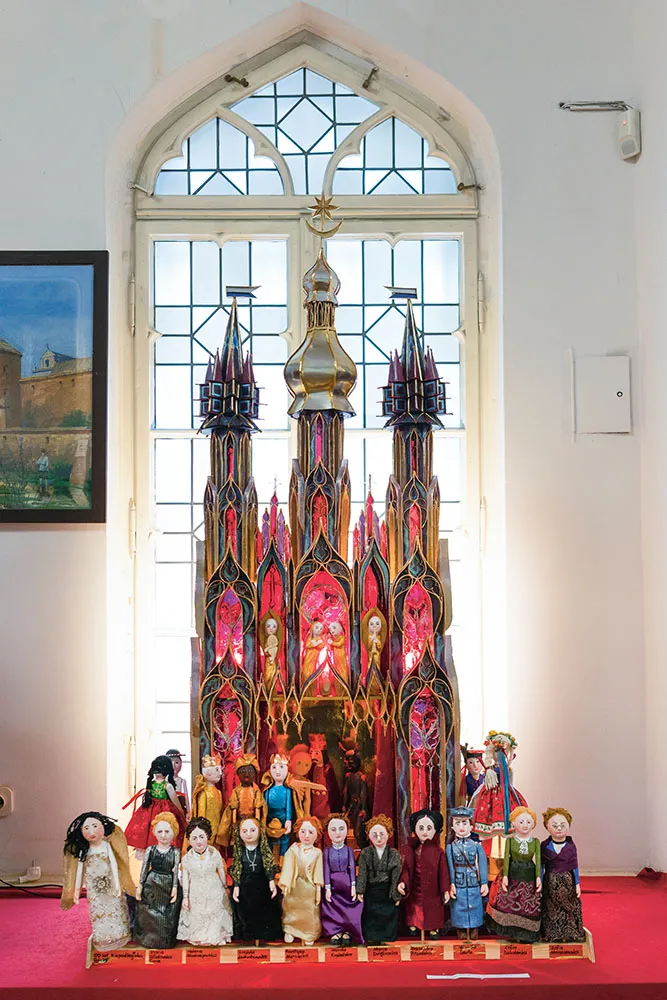
Mothers of Independence
Among the nativity scenes for which the Ethnographic Museum intends to raise funds and thus save from oblivion is a work by Anna and Rozalia Malik. To mark the centenary of Polish independence in 2018, they created a nativity scene which only features female figures fighting for a free Poland.
“I was born in a family dominated by women and I have six daughters myself”, says Anna Gertych Malik. “My grandmother taught her sons to love Poland. They sang the Polish national anthem while still in their prams, and later they died on the battlefield. One of them stayed in France. My father left us when I was 11 and only visited once in a while. A typically feminine predicament”, she says, explaining the source of her inspiration. An additional impulse to make a nativity scene like that was last year’s exhibition in Kraków’s Planty Park: “the ‘Fathers of Independence’ were there, but the ‘Mothers of Independence’ were absent. And yet if it had not been for the mothers, there would not have been anyone around to pass Polishness on to subsequent generations”.
Anna Malik lists the Polish women whose puppets were included in the nativity scene: St Urszula Ledóchowska, the actress Helena Modrzejewska, and the independence activist Aleksandra Szczerbińska. “I omitted the more radical figures in order not to incense the conservatives”, she says. However, her nativity scene did not win an award or even an honourable mention in the Kraków competition.
“Some people prefer to stick to the accepted canon. We felt a bit sad”, says Anna. ©
KRAKÓW. ANTROPOLOGIE DZIEDZICTWA – CZYTAJ CAŁY DODATEK SPECJALNY >>>
KRAKOW. ANTHROPOLOGIES OF HERITAGE – READ MORE IN ENGLISH >>>


